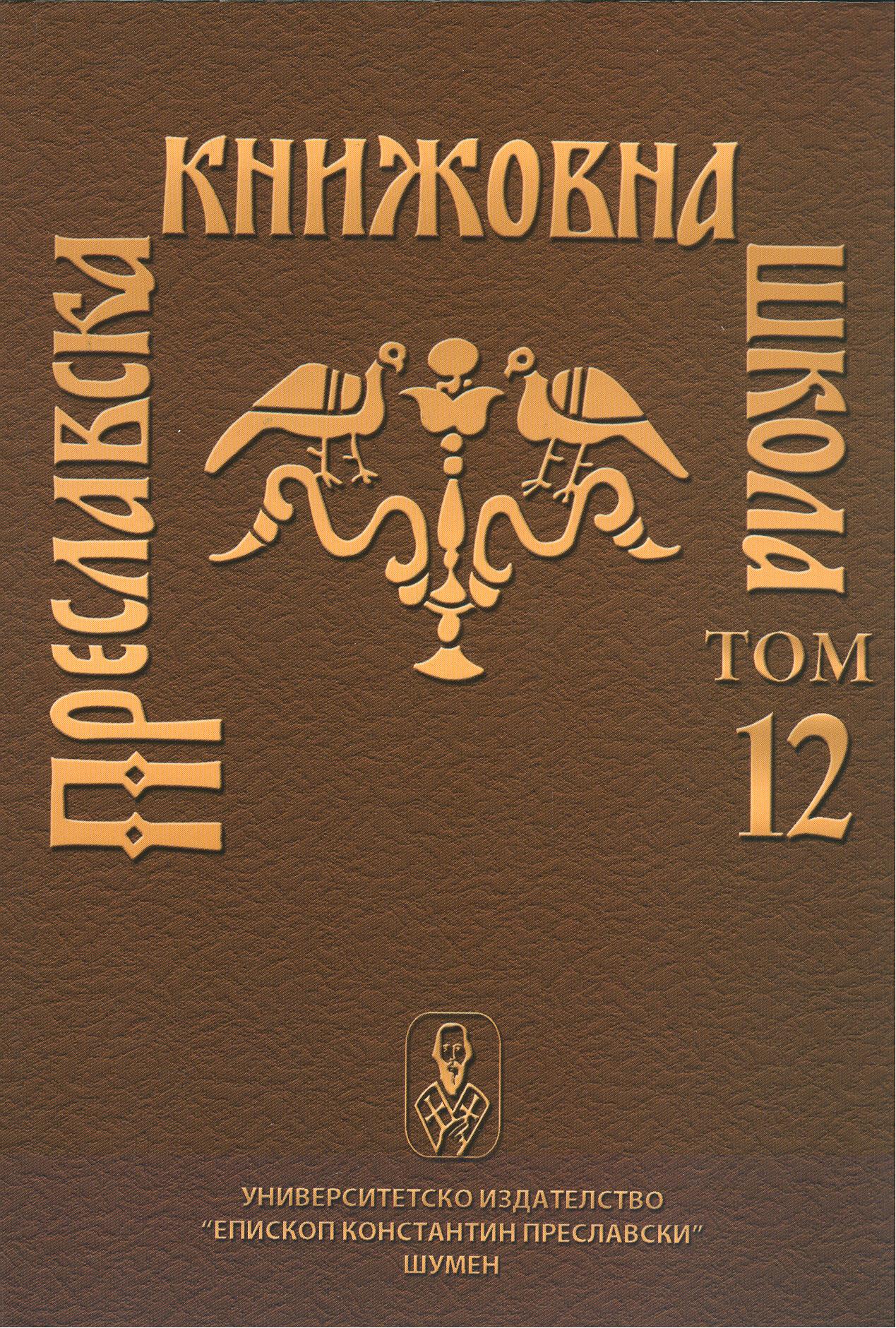КРЪСТ С РЕЛЕФНО ИЗОБРАЖЕНИЕ НА СВЕТЕЦ-ВОИН ОТ ПРЕСЛАВ
A CROSS WITH RELIEF IMAGE OF WARRIOR SAINT FROM PRESLAV
Author(s): Stela DonchevaSubject(s): History, Archaeology, Cultural history, Middle Ages, 6th to 12th Centuries
Published by: Шуменски университет »Епископ Константин Преславски«
Keywords: saint-warrior; lead cross; Preslav
Summary/Abstract: The object of this presentation is a lead cross, which was recently bought in the museum's medieval department in Shumen, together with other objects. It has elongated vertical arm with straight parallel sides, with a slight chipping at the bottom (Fig. 1). The image is a saint-warrior in full length, wearing a short tunic and chlamydia, buttoned front chest. In his left hand sticking a sword scabbard, and with the right blade itself, and laid on his shoulder. The image is presented in relatively high relief, the details of the face (eyes, nose, mouth) are caused by an additional edge. Another feature of iconographic interpretation is putting the entire image into triangle arc transmitted by two parallel lines in the middle of which there are equal-armed cross with expanding arms at the end. Above the roof is also inscribed rectangular cover board arrested in the middle of the upper arm of that cross. My attempts to find an analogue of the presented cross proved fruitless. Considered examples of such images confirm the dating of the lead cross in the XI century, when the time of the creation and enforcement of this iconographic subject, mostly in military saints, St. George and St. Demetrius. Although the simultaneous presentation of St. George and St. Demetrius in this way, when followed similar patterns are left with the impression that the still prevailing is that of St. Demetrius. Vague on details of the image lead cross found near Preslav not a sure guide as to whether the image is of St. George and St. Demetrius. But these examples of the time, especially reliefs from Chernomastnitsa and one in the Louvre comes to image of St. Demetrius. Finding similar objects will confirm or reject this hypothesis, but in this case, more importantly, that such a popular form of cross is combined with rarely occurring iconographic decision – what is it with the image of a saint-warrior in full size sword the right shoulder. Apparently, free interpretation of subjects and forms after X in the next century in Byzantine countries underlies the creation and distribution of such non-traditional and less popular iconographic solutions. Without doubt, this cross is created in a local workshop, which is issued from his not so precise and accurate execution, as well as easily accessible and cheap material to build. That tin cross, however, has not served as a model and was intended directly for use. The reasons for this are not only thematically and chronologically it comes from the time of operation of these production centers, and that part of the cult objects, such as lead crosses and medallions were popular and in use right through XI-XII century. Whether there are other similar crosses from the same time, future studies will show, probably is that whoever it is ordered and the one who had worked well are fully aware of its significance.
Journal: Преславска книжовна школа
- Issue Year: 2012
- Issue No: 12
- Page Range: 395-403
- Page Count: 9
- Language: Bulgarian

